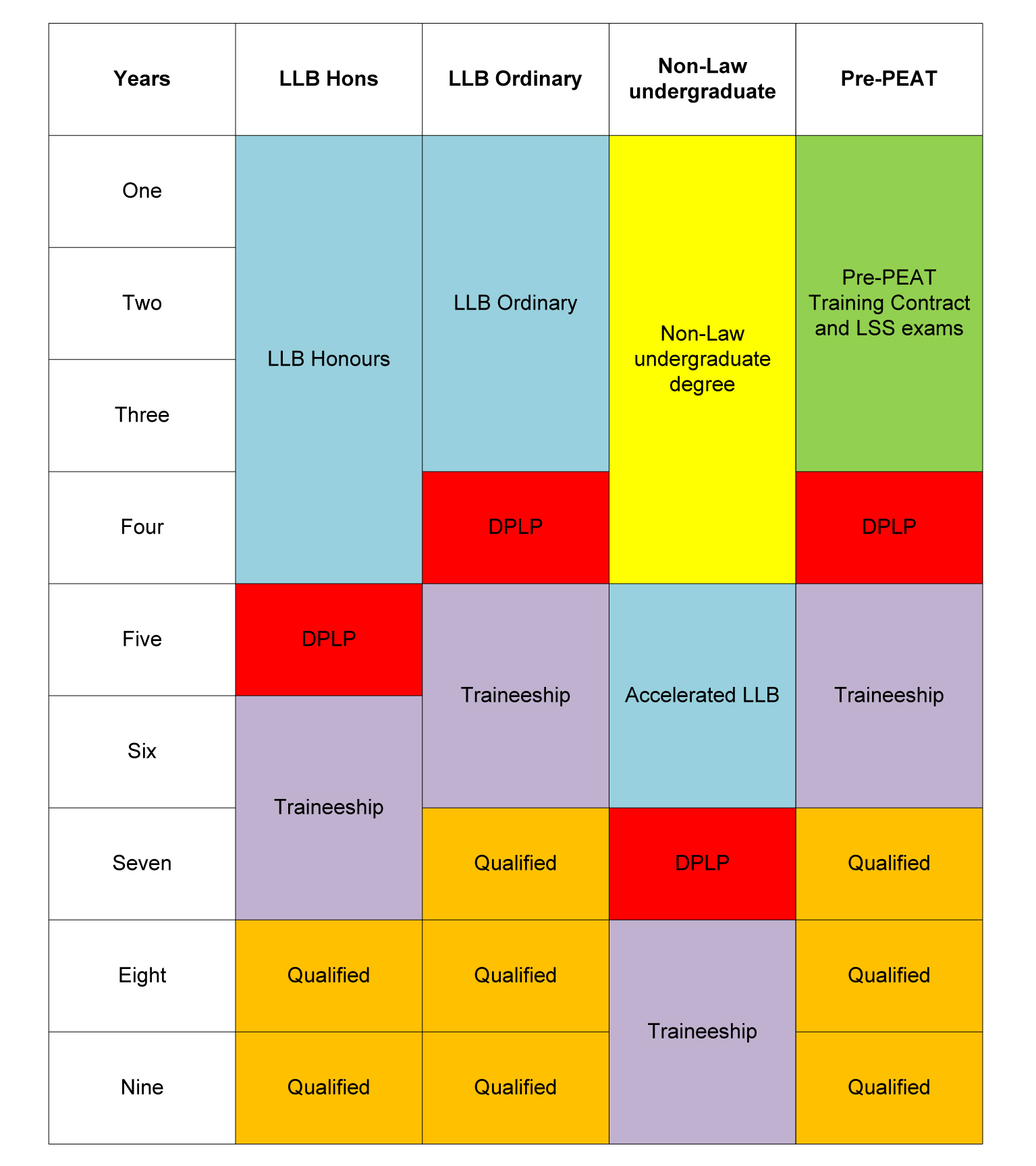Overview of the route to qualification
The first section of the guidance clarifies the various routes to qualification as a solicitor in Scotland and also lists providers of the constituent parts of the route to qualification.
This section is included to remind all involved in recruitment and selection that whilst many individuals will qualify via the ‘’traditional’’ route (full-time LLB Hons, full-time Diploma in Professional Legal Practice, traineeship) that there are other routes – and that these need to be considered when designing recruitment and section processes.
There are four main routes to qualification as a solicitor in Scotland. These are outlined in the diagram below:

For ease of reference, this chart is based on all routes being completed full-time. In reality, each route can be completed part-time (and each part of each route can be completed part-time).
We hope that the chart helps employers understand that there is more than one way to qualify as a solicitor. It is important to remember this when designing application processes, application forms and job specifications.
Employers should be aware that there are other routes such as college articulation (e.g. a person attends a college and transitions to the LLB) or an access route (e.g. a course which – in a limited number of circumstances – can allow people with few/no Highers to access degree courses).
Some candidates may also have mitigating, or extenuating, circumstances. It is useful to build into the application process an opportunity for such individuals to explain those circumstances.
Where do law students study law?
It is always important to remember that not all people who may be applying to your organisation will have been to university. Between 10 and 20 people each year complete the Pre-PEAT 1 Training Contract (and sit the Law Society exams).
As well as the Pre-PEAT 1 Training Contract (which can take place at any firm or in-house organisation), the following ten universities offer the LLB:
- The University of Aberdeen
- The University of Abertay Dundee
- The University of Dundee
- The University of Edinburgh
- Edinburgh Napier University
- The University of Glasgow
- Glasgow Caledonian University
- Robert Gordon University
- The University of Stirling
- The University of Strathclyde
All of the LLB providers are accredited by the Law Society of Scotland. Whether a candidate has undertaken the degree or the Pre-PEAT 1 Training Contract, they will then undertake the Diploma in Professional Legal Practice (also known as PEAT 1).
The following six universities currently offer the Diploma (all of which are the accredited by the Society):
- The University of Aberdeen
- The University of Dundee
- The University of Edinburgh
- The University of Glasgow
- Robert Gordon University
- The University of Strathclyde
